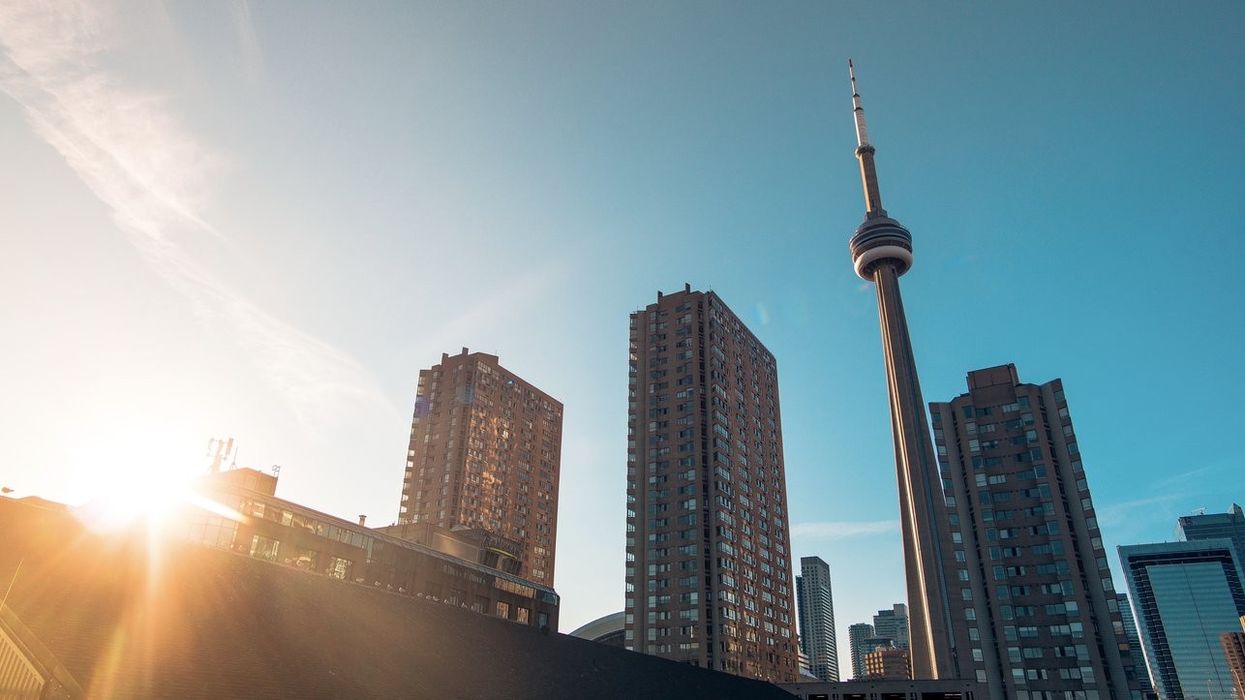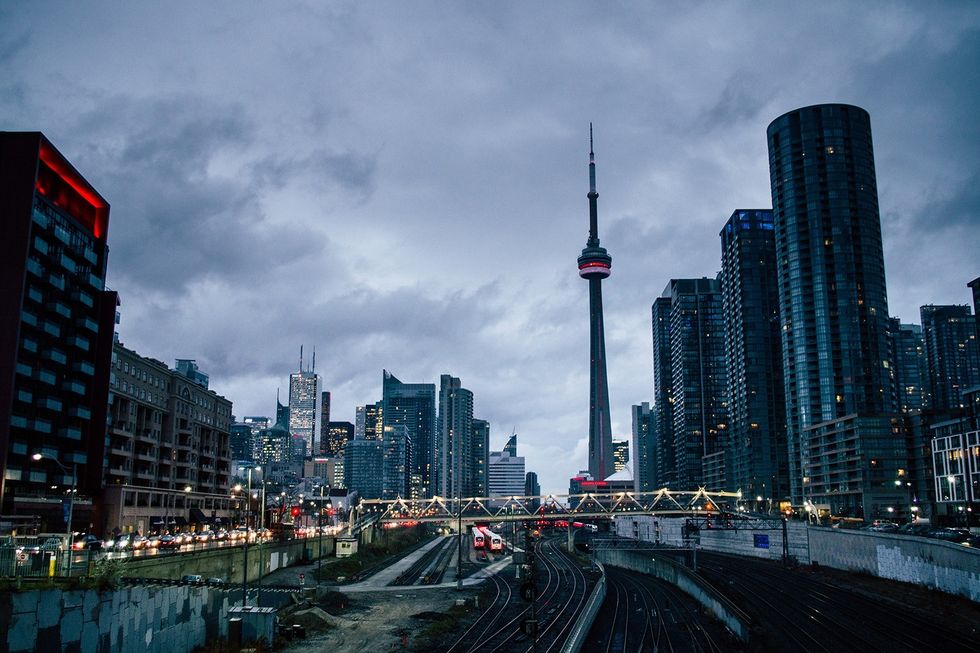Despite its long-standing fear of heights, Toronto will soon have more skyscrapers than any other city in North America save New York.
Some will see this as a welcome sign that little old 'Trawna' has become an international metropolis. Others will worry that all these tall buildings will cast them, alone and frightened, into the permanent darkness of a city they no longer recognize.
Figures released last week by the Council on Tall Buildings and Urban Habitat reveal that although Toronto has a mere 67 towers over 150 metres tall today, another 31 are under construction and a further 59 in the works. That adds up to 157, well ahead of Chicago, now in second place with 126. But the Windy City has just 19 towers on the boards, clearing the way for Toronto’s ascendency. Meanwhile, the Big Apple boasts 284 skyscrapers.
READ: Toronto on Track to Surpass Chicago in Skyscraper Rankings
Though the race to the clouds matters much less than it did decades ago, the civic ego still sees skyscrapers as a measure of municipal prowess. Local scepticism notwithstanding, the power of the tower is undeniable. For millennia, we have been building up in a vain attempt to reach the heavens. If it wasn’t pyramids, it was church steeples, minarets, obelisks and the like. If their purpose wasn’t to commemorate the king, it was to lift us closer to our various gods.
Since the 20th century, however, towers serve to display our economic might. But as much as money has replaced faith, the psychology of a tall building comes from the deepest recesses of the male psyche at its most tumescent. The example of the CN Tower is instructive. When erected in 1976, it was officially a telecommunications tower, but we all knew its unspoken purpose was to make it clear to the rest of the world that ours was bigger – much bigger -- than theirs. For more than 30 years, the CN Tower was the world’s largest phallic symbol, er, tallest freestanding structure. Though our tower still stands tall, the Burj Khalifi in Dubai surpassed it in 2007. By then, it hardly mattered; Toronto had made its point and clearly Dubai felt it had more to prove.
Torontonians watched the construction of the CN Tower with a mixture of shock and awe. It was an aerial event, one that unfolded hundreds of metres above the ground. Back then the tower occupied a site far from any residential enclave. There were few neighbours to raise the usual complaints about height: shadow effects, increased traffic congestion, wind tunnels and decreased property values. Though the landscape has become more residential during the intervening decades, by then it was too late. The CN Tower isn’t going anywhere.
But every time a tall building is proposed for any other corner of the city, the spit hits the fan. Aided and abetted by the area councillor and, as often as not, Toronto’s planning department, locals raise a hue and cry. The response is always the same: not in my backyard.
READ: Site Seeing with Hume: 150 River Street Gets Its Grade
The noise makes it easy to forget that the most important part of a tower isn’t what happens above but what happens below at street level, where the building meets the ground. A few storeys on high are barely discernable. By contrast, how a tower fits into the urban context can be the difference between success and failure.
Consider the Minto towers on Yonge St. just south of Eglinton: when first proposed 20 years ago the two residential high-rises met with unrelenting opposition. Ratepayer groups fought them tooth and nail, even voting out then councillor Anne Johnston who had supported the project. Their objection was simple; the buildings were too tall. As far away as Oriole Parkway people were up in arms. The towers, they feared, would block their sunlight. As if.
Today more recently constructed neighbours make the project look small. E Condos on the northeast corner of Yonge and Eglinton are 58 and 38 storeys tall; Minto’s are 52 and 37. More important, Minto cleverly included a pedestrian pathway that bisects the complex giving residents a short cut to the Eglinton subway station. The city was smart enough to add a pedestrian crossing to the pathway, which made the project a significant neighbourhood benefit. But, true to form, city planners insisted the towers be shortened. The move was little more than an attempt to pander to North Toronto’s well organized NIMBY forces.
READ: 47-Storey Condo Tower Coming to Heart of Entertainment District
The city’s habit of reducing height, typically by about 10 percent, has led to the phenomenon of “squash and spread.” It happens when planners demand a proposed tower of, say, 50 storeys be reduced to 45. To achieve the same number of units, towers must be widened – spread. The result is that towers, especially residential towers, tend to look short and squat. That in turn leads to complaints about the mediocrity of Toronto architects. Granted, building design here isn’t up to the standards of Chicago or even New York, but given half a chance it could be much improved.
It doesn’t help that the Toronto Design Review Panel is made up of nervous professionals whose main aim is to avoid controversy at all costs. They would rather suggest than cajole or – god forbid – confront.
Given that Toronto has been a vertical city for decades, the moment has come for us to stop hating the tower and learn to love it. We’ve already taken off; it’s time we teach ourselves to fly.






















